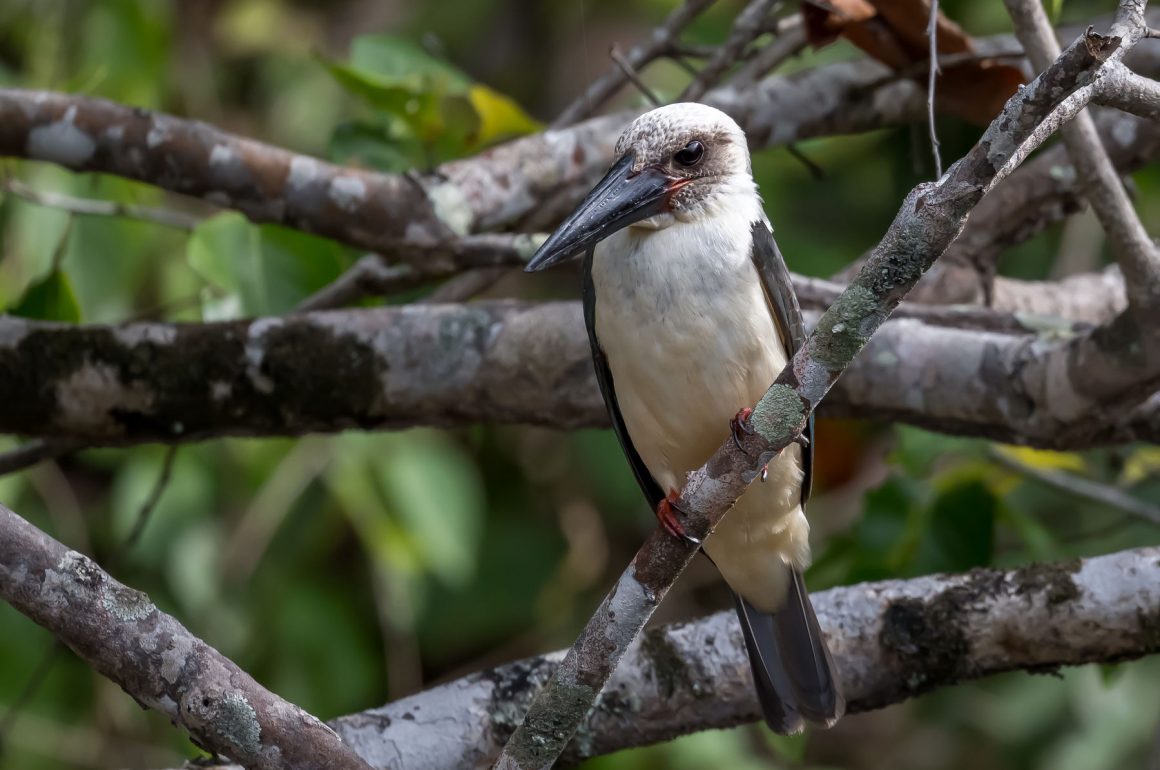
While the main reason to come to Tangkoko is to see birds at the Tangkoko Nature Reserve, it is also worth considering a shortish boat trip along the coast – even for people like me who do not particularly like boat trips.
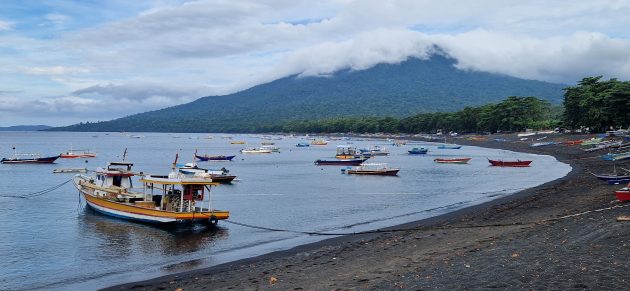
My trip started how many activities on Sulawesi seem to start – with waiting. We were at the beach, the booked boat was not. A call to them eventually brought them to us, and we learned they had been sleeping.
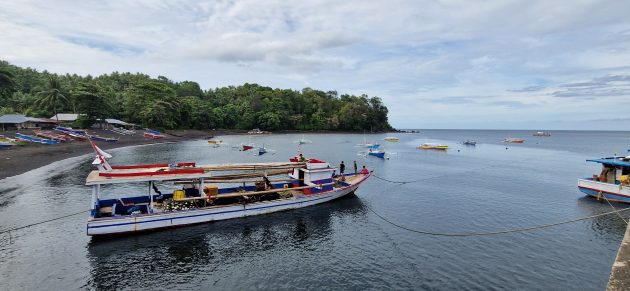
Then again, during this trip, I read a crime novel (“Reliable in Jakarta”), which includes the sentence “Five Germans surrounded me moaning with their customary arrogance about the country’s [Indonesia’s] inefficiencies.” So maybe I’d better shut up.
The main reason to take the boat trip is to see the Great-billed Kingfisher. It is not a particularly colorful bird (particularly for a kingfisher), but impressive due to its large black bill.
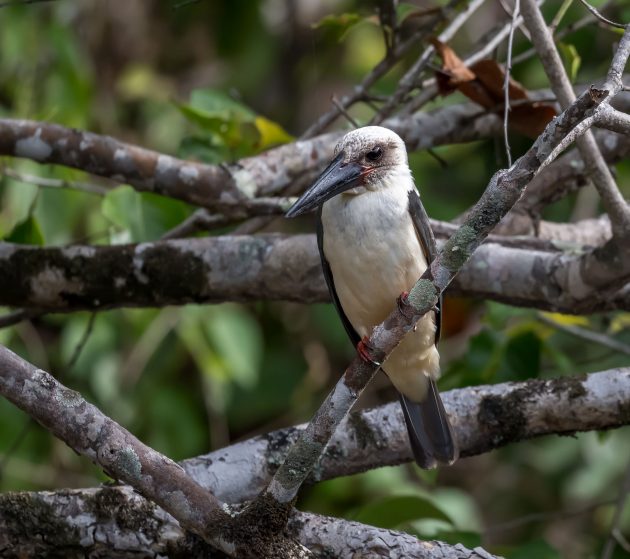
And it is a Sulawesi endemic – personally, I do not quite understand the excitement about endemics (seems a bit too nationalistic to me), but I am probably in the minority of birders here.
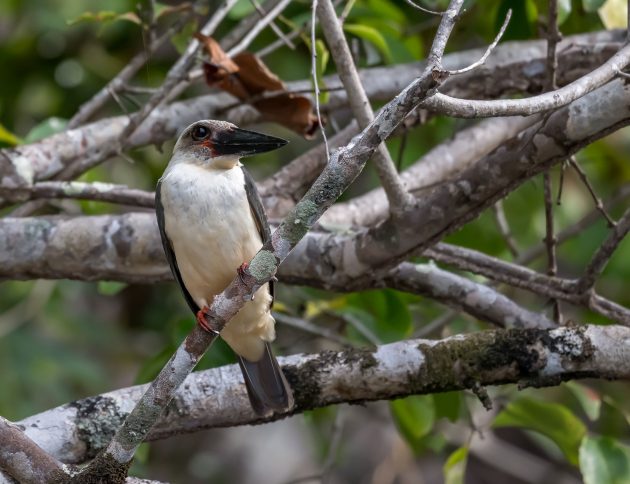
Apparently, a blogger named Ray Cannon did the same tour in 2015 – also to see the Great-billed Kingfisher – and wrote about it in his blog. I may have to ask him for his excuse for not writing for 10,000 Birds.
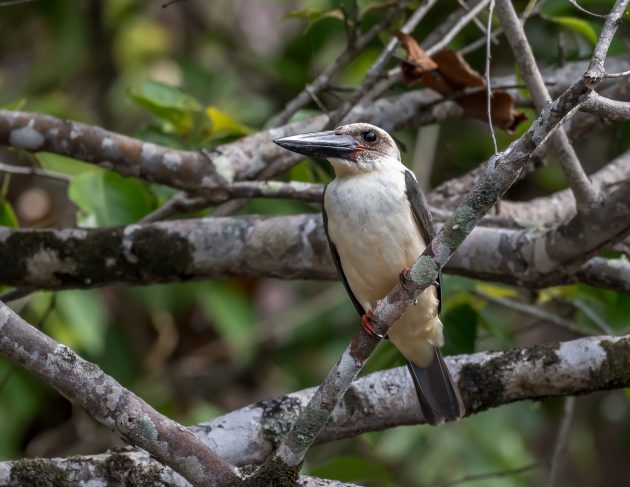
As we saw the targeted kingfisher within the first 15 minutes of the trip, we had time to see a few other birds on a small island close to the shore.
Two species mainly occupy that island, the first one being the Pacific Reef Heron, a slightly sinister bird probably listening a bit too much to old Sisters of Mercy records.
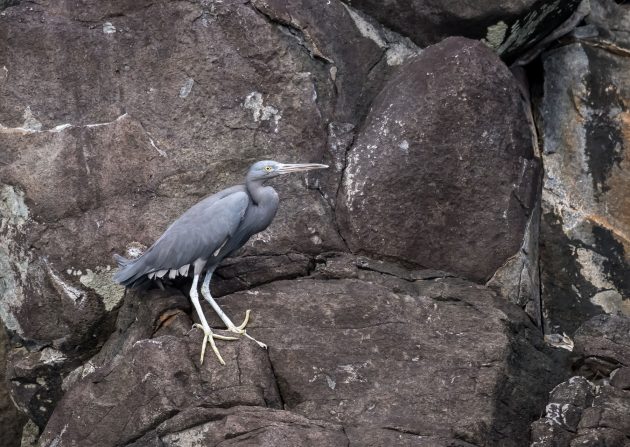
The ones on the island seem to be exclusively the grey morph, not the white one.
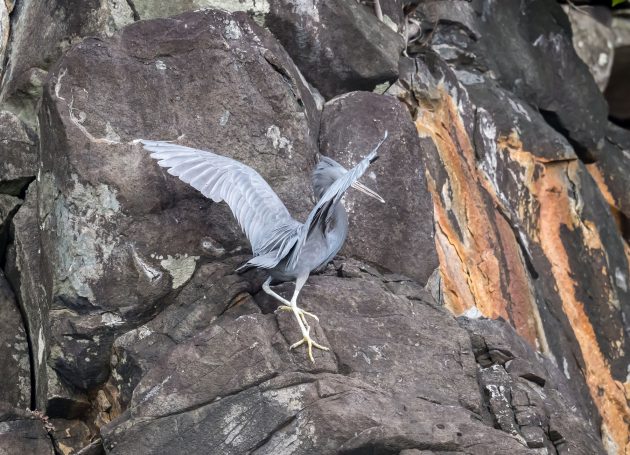
Interestingly, it seems the two morphs have different hunting techniques. One study found that white-phased birds sought prey by a flight, land, and freeze hunting style in breaking surf, while dark birds pursued prey by actively walking or running on reef flats.
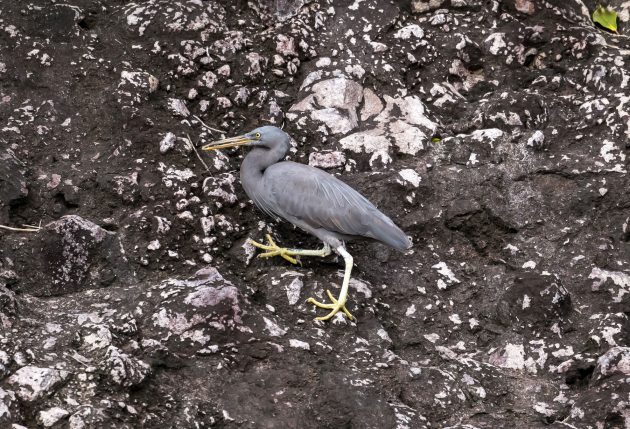
The other major species on this small island is the Black-naped Tern.
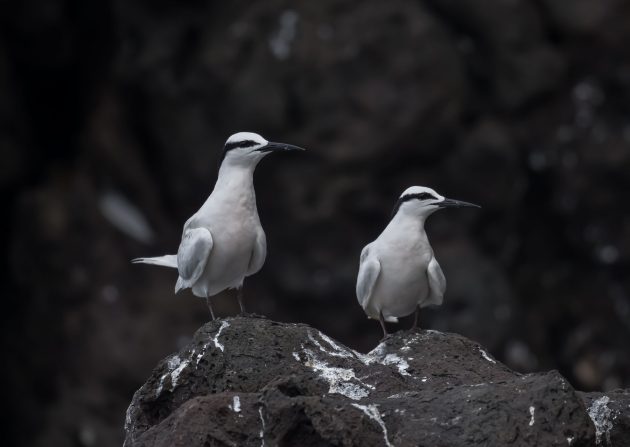
(I vaguely remember Paul once making some pun related to terns. Here is one I just found in Alexandra Petri’s “Field Guide to Awkward Silences”, which in itself sounds a bit like something birders might find useful: “the man who hated seabirds left no tern unstoned, while the talented masseuse left no stern untoned”)
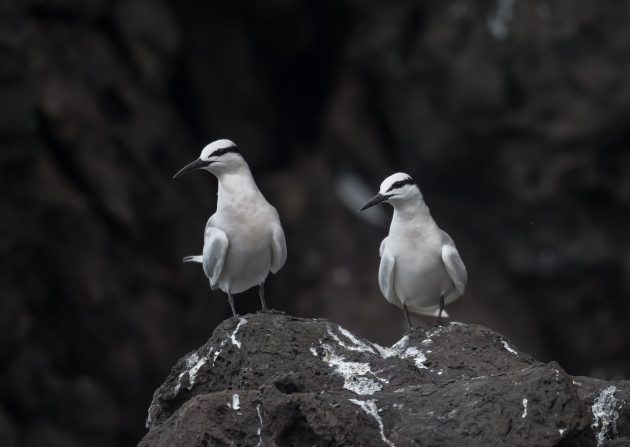
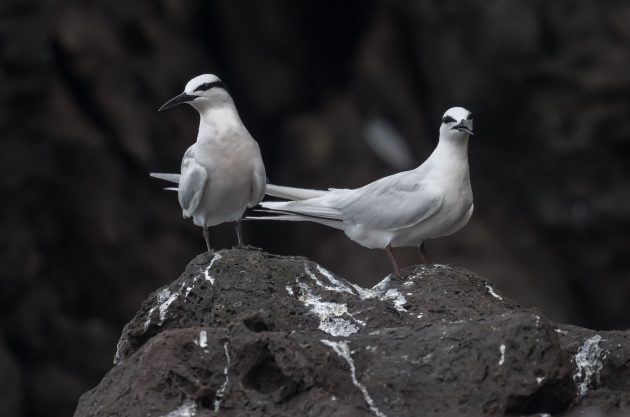
It is one of the most common seabirds in Indonesia (HBW).
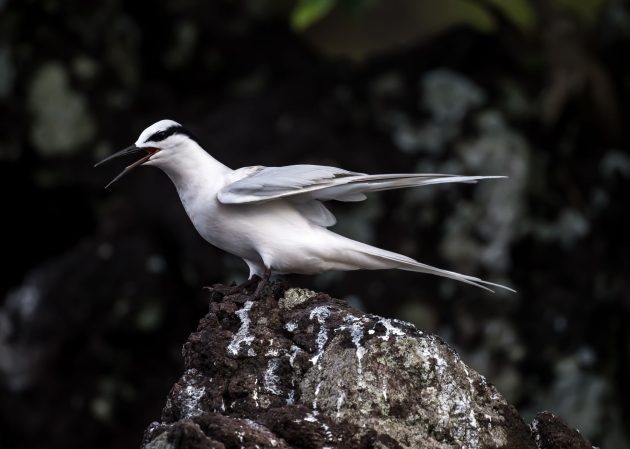
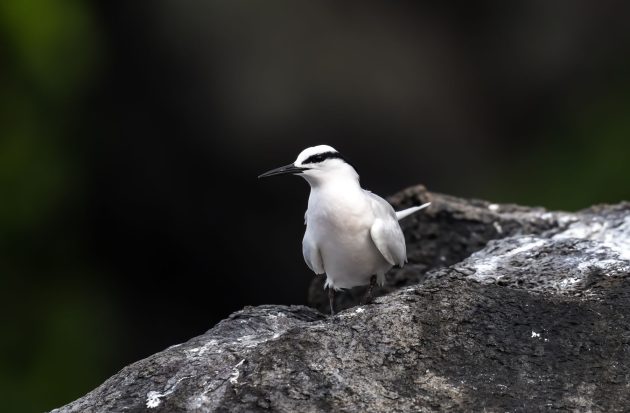
Some of the photos I took of them seem to lend themselves to use as memes (thanks to S.R. for the suggestion).
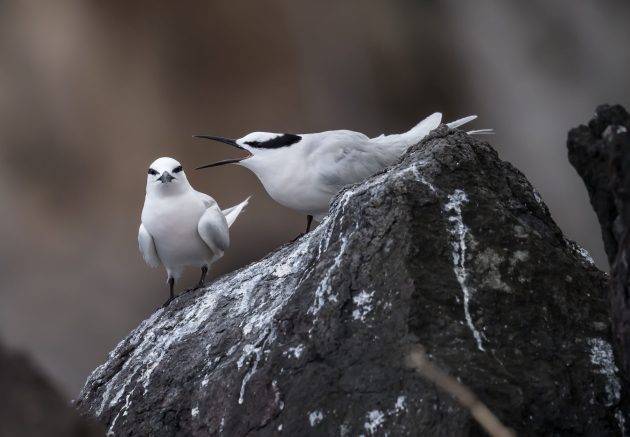
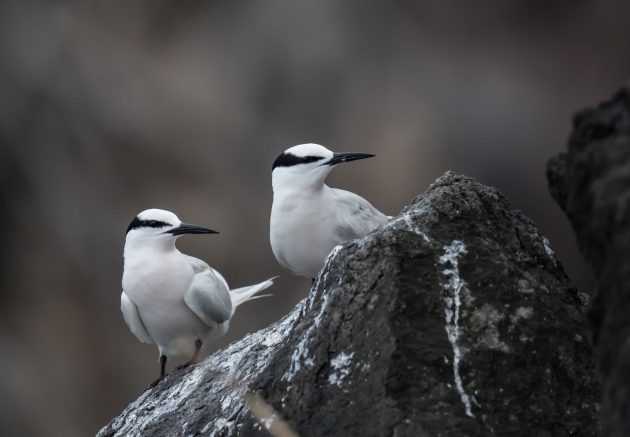
An interesting find on that small island was a Spotted Kestrel. The scientific name Falco moluccensis indicates that this is a regional specialty – it can be found on Sulawesi, but also on Sumatra and Java.
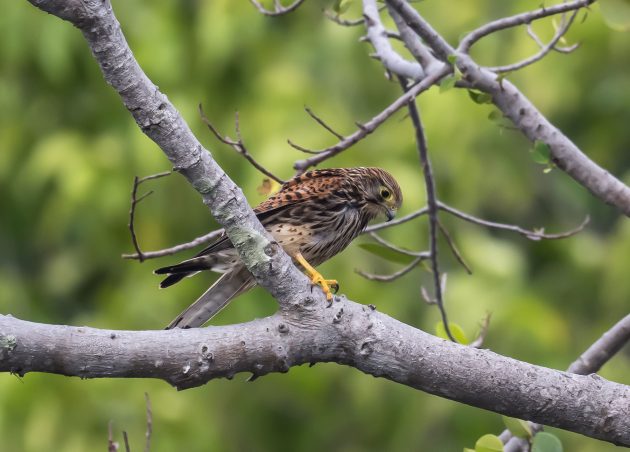
The scientific literature mentions two threats to the species on Sumba island – it is killed with air rifles and slingshots (source) and losing nesting sites in the roofs of traditional Sumba houses as their number declines (source).
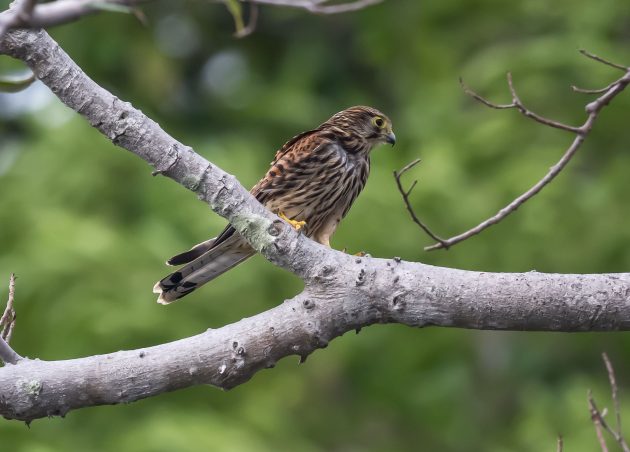
My guess is that guides on how to write blog posts and articles probably advise to refer back to the start of the text as it ends – something I almost invariably fail to do. However, I will make an exception this time as the trip also allowed me to take photos of another kingfisher – the Collared Kingfisher.
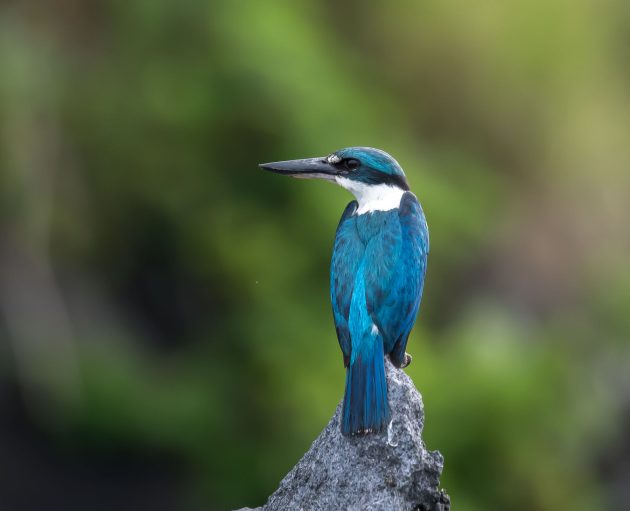
I can even do the same trick twice, possibly as compensation for previous omissions. The book quoted above mentions Germans again a bit later (mind you, these are evil Germans committing crimes somewhere in Southeast Asia, not attractive, good-natured Germans writing birding posts and taking care of cats while living in China): “The Germans, in their white socks and designer jeans, were getting noisier, now discussing football.” I hasten to add that I never wear white socks or designer jeans, am usually very quiet, and am not very interested in football any more.
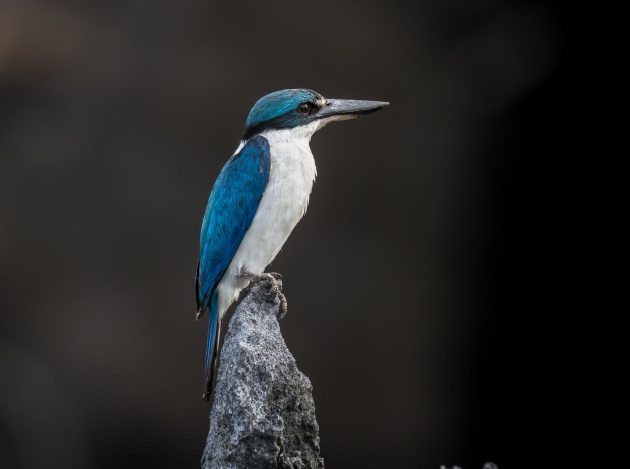







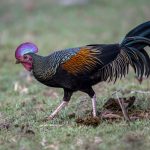

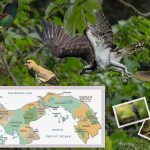


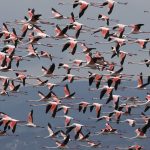
Here in western Europe we have just the one species of kingfisher, so I look with a degree of envy at Kai’s wonderful photographs of these birds.
I understand your distaste for the issue of endemics, since having a large number of endemics is a privilege only available to larger countries (like Mexico, #6 in number of endemic birds). But I am a big fan of birds with small or tiny ranges, say, like one found only on Sulawesi.
Be careful with endemics when hiring a guide. Sometimes guides just assume you want to see the endemics ONLY, so they will focus on these species. This is not bad if it’s trip number 37 to that country but for your first (and maybe only) trip you normally like to see as many species as possible. Tell the guide what you want!